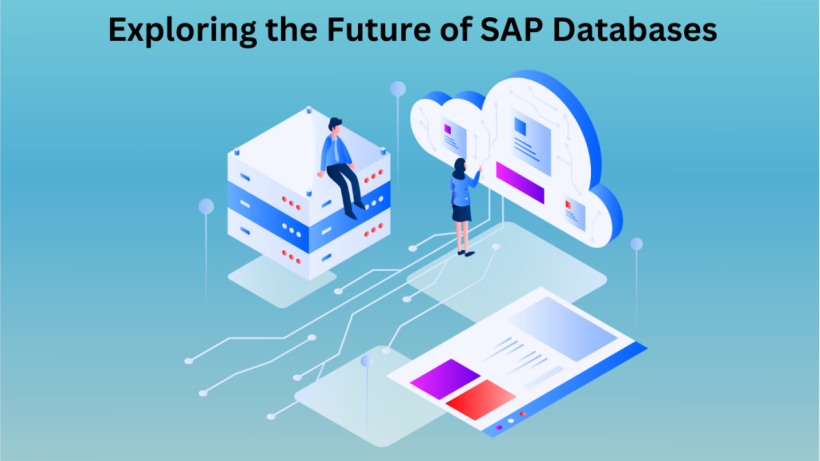The SAP Qualification is one of the important credentials. It gives workers the skills they need to get the most out of SAP Databases. Many businesses can’t run without these systems, which make data management and real-time analytics possible. To use SAP databases to drive innovation, improve security, and streamline processes in the future, it is important to understand the changes and trends that are shaping them. This blog explores the future of SAP systems and how they could change things by diving in.
The Evolution of SAP Databases
SAP databases have evolved over the years through certain major changes. There is a great focus on improving efficiency and speed and on integrating data from the release of the R/3 system on SAP to the current S/4HANA. SAP introduced SAP HANA in 2010, which changed the face of databases as it incorporated the memory in computing concept, which could instantaneously process and analyse data.
Key Trends Shaping the Future of SAP Databases
Integration of Artificial Intelligence and Machine Learning
SAP database integration with AI and ML can potentially revolutionise the industry. By improving data processing capabilities, these technologies can lead to advanced data insights, automated decision making, and predictive analytics. AI driven algorithms, for example forecast consumer behaviour, market trends, and operational inefficiencies, giving firms helpful information. Businesses can use AI and ML capabilities for better strategic planning and decision making as SAP continues to include them in its databases.
Cloud Adoption and Hybrid Solutions
SAP databases are changing as a result of cloud computing. Several factors, such as flexibility, scalability and cost, are why more organisations are encouraging the adoption of cloud solutions for their SAP systems. SAP HANA Cloud and SAP Data Warehouse Cloud are two examples of SAP’s focusing on cloud solutions. Other emerging models include the half and half solutions that implement both the on-premises and cloud systems. These solutions are hybrids of the on premises solutions and the cloud, which are favourable since they offer the security and management of on premises systems as well as the flexibility and scalability of the cloud.
Enhanced Data Security and Compliance
As data breaches worsen and happen more often, SAP databases will emphasise data security and safety in the future. SAP will likely keep improving its security measures, such as real-time threat recognition, advanced encryption, and multi factor authentication. Thanks to strict data protection laws like GDPR and CCPA, compliance will also stay a top priority. Businesses can count on SAP to provide solid tools and features to help them follow these rules.
Advanced Data Analytics and Real Time Processing
Advanced analytics and real time data processing are in greater demand. SAP databases will keep developing to satisfy this need, providing improved features for rapidly and effectively handling massive amounts of data. With the capacity to perform complicated analytics in real time, businesses can obtain more significant insights into their operations, customer behaviour, and market trends. Consequently, this will enable more informed and flexible decision-making.
Internet of Things (IoT) Integration
Another trend that will influence the future is the interaction of IoT with SAP databases. IoT devices produce large volumes of data, which can be used to gain insightful knowledge. With SAP’s IoT solutions and strong database capabilities, enterprises can efficiently gather, handle, and evaluate IoT data. This connection will support numerous applications, including real time monitoring in healthcare and predictive maintenance in manufacturing.
Automation and Intelligent Process Management
The use of automation in handling intricate corporate operations is growing in importance. More automation features will be added to SAP databases, minimising errors and manual intervention requirements. New technologies such as AI and ML will play a significant role in process management and business intelligence to ensure control of business processes and effective completion of daily functions.
The Impact of These Trends on Businesses
These trends will influence SAP databases’ future, which could bring many advantages for companies. Better data processing skills will make real-time insights possible, facilitating more strategic and agile decision-making. Thanks to AI, ML, and IoT convergence, businesses will have robust instruments to promote efficiency and innovation. Adoption of the cloud will provide more scalability and flexibility, and better security measures will guarantee compliance and data protection.
Preparing for the Future
Many organisations have realised the importance of SAP databases to their businesses and should prepare for future benefits. This entails making strategic investments in data management, enhancing the skills of their personnel to take advantage of new technology, and purchasing the newest SAP systems. Businesses can also maximise the benefits of these innovations and manage their complexity by collaborating with knowledgeable SAP experts.
Conclusion
With developments in AI, ML, cloud computing, data security, and other areas opening the door to even more creativity and efficiency, SAP databases have a bright future. Companies may fully utilise SAP databases to propel expansion and prosperity in the digital era by keeping up with these developments and making appropriate preparations. The Knowledge Academy offers invaluable resources and training to help professionals stay ahead of these advancements. Businesses open to change, and innovation have a bright future as SAP keeps pushing the envelope of what is possible.
Laila Azzahra is a professional writer and blogger that loves to write about technology, business, entertainment, science, and health.
